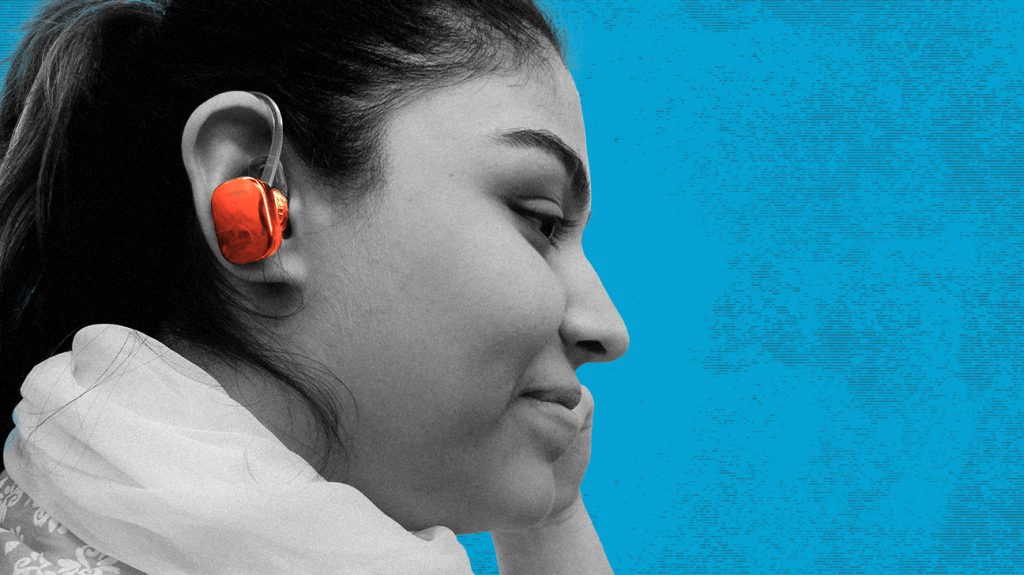To implement indoor navigation and tracking systems, companies use equipment based on Bluetooth® Low Energy technology, such as tags and beacons.
Bluetooth® Low Energy beacons are miniature sensors used to locate objects indoors. They are fixed, mounted in various places in the building, and are most often used for navigation and sending push notifications to the user’s smartphone.
Bluetooth® Low Energy tags are tags or wearable equipment (such as badges, cards, etc.) that are held directly by employees or attached to the tracked object to monitor its location. Unlike beacons, tags are always in motion.
Using this equipment together with indoor navigation and tracking systems allows you to quickly find objects inside buildings, create short routes, and send push notifications with ads or useful content.
How Bluetooth® Low Energy Tags and Beacons Work
Beacons and tags send out radio signals with object identifiers, which are sent at certain intervals and can be used by readers to activate any action. For example, if a person with a smartphone and Bluetooth® LE enabled enters a room, the beacon immediately helps identify their exact location and initiates a push notification advertising message. Tags also help track moving objects indoors, such as forklifts and pallets in warehouses, medical equipment in hospitals, and more. It saves time for company employees to find it.
Other examples of solutions facilitated by beacons and tags are:
- indoor navigation;
- indoor asset tracking;
- fixing the time of entry into prohibited areas of the building;
- geofencing;
- collecting geodata for analytics;
- patient wandering monitoring;
- etc.
Similarities and Differences Between Bluetooth® Low Energy and Bluetooth®
Bluetooth® Low Energy has similar features to Classic Bluetooth® technology. Both systems are wireless communication protocols, have a short range, and work in the same way. However, there are differences between the two. Classic Bluetooth® is mainly used to connect smartphones to a headset to make phone calls. Bluetooth® LE is a low-power version of Bluetooth®. It’s used for low-power sensors when there is no need for a permanent connection and long battery life is a priority.
Benefits of Bluetooth® Low Energy Equipment
- Significantly reduced power consumption – sensors and tags stay asleep most of the time and only periodically “wake up” to transmit identifiers. Averaging about a tenth of a second between transmissions, you consume less power and extend battery life.
- Unlimited device connectivity – the system has no limit on the number of connections, so any compatible device can communicate with multiple sensors at once.
- Versatile application – beacons and tags can be successfully used for a wide range of tasks, from indoor navigation to enterprise analytics. They have a wide range of applications and are suitable for implementation in areas such as healthcare, retail, manufacturing, logistics, warehousing, etc.
The Benefits of Using Bluetooth® Low Energy Technology For Manufacturing
Due to its efficiency, BLE equipment is quickly gaining popularity in manufacturing. Companies benefit from it in the following ways:
- No need for Wi-Fi or mobile communication – With Bluetooth® Low Energy beacons and tags, no additional means of communication are required, as data from them is actively streamed to the user’s smartphone, and readers.
- Customizing the tracking settings to your needs is one of the main advantages of the technology. When using Bluetooth® Low Energy, you can customize the operation of sensors to the specific needs of the enterprise, which provides greater efficiency in the implemented solutions (indoor navigation, tracking, etc.).
- Ensuring the safety of employees – especially justified in hazardous production facilities or enterprises with restricted access areas. BLE-based solutions using beacons and tags help keep staff safe, quickly call for help in case of emergency, and provide short evacuation routes.
The Benefits of Bluetooth® Low Energy Technology for Retail
Bluetooth® Low Energy is the most up-to-date solution for optimizing store operations. With this technology, you can dramatically increase customer confidence, improve the visitor experience, and optimize product placement for a better customer experience.
One of the most useful features of the technology is the ability to detect potential customers. The beacons are installed on various objects (such as billboards, advertising screens, sections of the sales floor, etc.), and when a person with a mobile app passes by, they initiate sending them an advertising push notification. The notification can contain any information – discounts, sales, or bonus offers. This approach increases the efficiency of marketing campaigns and allows them to attract new customers.
It’s worth noting that indoor navigation based on Bluetooth® Low Energy beacons and tags allows visitors of shopping malls to navigate to stores or shelves with products. To use it, all you need is a mobile app on your smartphone, which builds digital maps of the mall. When a visitor enters a store, they can specify the location of their interest, and the system will build a short route and help them get to their destination with minimal time expenditure.
Other examples of using Bluetooth® Low Energy technology in stores include:
- Using smart carts, which are equipped with tablets and help the visitor reach the shelf with the desired item;
- A quick search for cars in the mall parking lot with their location and routing.
To sum up, Bluetooth® Low Energy tags and beacons provide businesses with cost-effective and efficient ways to implement location-based systems that improve companies’ business processes. They optimize employee performance, increase customer loyalty and provide an optimal environment for making the right management decisions.
Follow Techdee for more!
